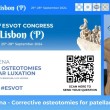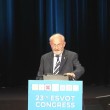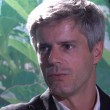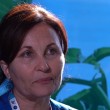
Interview with Professor Ron Shahar of the Koret School of Veterinary Medicine, The Hebrew University of Jerusalem, Israel, 23rd Sept 2009
G.S-S.As I recall you took an engineering degree before a DVM. What caused you to alter your course of study?
After completing my B.Sc degree (mechanical engineering) and my M.Sc degree (applied mathematics), I contemplated what to do next. The obvious choice was to go for a PhD in the same field. However, as in both my B.Sc and M.Sc theses I dealt with the application of mathematical theories to solve biomedical questions, I became intrigued by the possibility to combine my love for animals with a rigorous study of their physiology and pathology, hoping that in the future I will be able to combine the tools of engineering and mathematics That I had acquired early in my career with clinical work. The concept was certainly vague and unclear, but sounded exciting. I am happy to say that it eventually all became a reality, the fruits of which I am now enjoying. Six years ago I completed the cycle, when I obtained also a PhD in biomechanics.
G.S-S. After graduating you spent a lot of time in the clinical field but I gather that your days are now spent in research. Likely some of the unanswered questions we have in the clinical areas of veterinary orthopaedics led you that way? Is your work particularly aimed towards clinical problems and are you still involved in some day-to-day attention to animals?
I completed my DVM at the Ontario Veterinary College in 1983 and then I spent about 15 years entirely in the clinical field: in private practice, small animal internship and surgical residency, and finally as a clinical faculty member in the teaching hospital Koret School of Veterinary Medicine in Israel. I was always particularly interested in orthopaedics; during many clinical situations I encountered problems for which available solutions were based on experience and a ‘gut feeling’. At some point I realized that the tools of engineering and applied mathematics were perfectly suited for providing more rigorous answers to these problems. Around 1997 I started with my biomechanical research endeavours, concentrating mostly on numerical models and in vitro experiments looking at joints and bone-implant relationships. At that stage my research was entirely clinically motivated. With time I drifted more towards basic bone research. However, obviously the results of such studies are still relevant and applicable to orthopaedics, though in less direct ways. Although at present I am deeply involved in research, with a very active laboratory, several PhD and MSc students, and established several collaborations – both nationally and internationally, as a member of the small animal surgery staff at our teaching hospital, I am still very much involved in clinical work. I am particularly proud of our Residency Programme, which I have run for the past 12 years, and where at this time we have seven people who already completed the programme: five having passed their Board Examinations, two more are eligible to take them and also two Residents are currently in training.
G.S-S. And as to your own guided research projects?
The scope of my research is quite wide, but can be broadly described as investigating the relationship between bone structure and function. For instance we are: studying the effect of muscle forces on the morphology and architecture of developing bones in the mouse embryo, trying to determine the contribution of cancellous bone to the mechanical performance of the entire bone, trying to quantify the short-range order existing in the distribution of secondary osteons in the cortical bones of dogs and horses. Also we are studying the effect of osteoporosis on crack propagation in cortical bone (using as one of the models long bones of spayed bitches), and also various effects on the architecture and mechanical properties of fast growing broiler chicks. Although this is only a partial list, it is evident that the wide scope of potential questions and avenues of research is a major source of pleasure for me.















